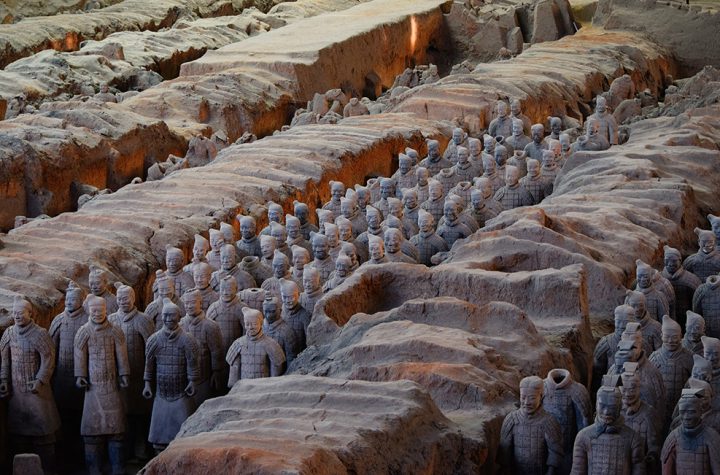
A still picture from a security camera video is among a handful of newly disclosed images included in the update, released by the NTSB on Friday.
The witness told the investigators he heard a helicopter getting closer before emerging from clouds, rolling onto its left to the point that the witness could see its underside, and crashing about 50 feet below him, according to the report.
The witness gave investigators a picture of thick black smoke coming from the flaming wreckage of the Sikorsky S-76B helicopter.
The report gives no indication that the helicopters engine failed: An analysis of the crash site and the witnesss account indicate the engine was supplying power to its rotors right up until the moment of impact.
An NTSB team left Washington the night of the Jan. 26 crash to begin its work. Investigators spent part of last week at the crash site, documenting the wreckage of the helicopter and using a drone to copy its flight path.
Fridays update is a typical early step in the boards investigations. A full report, which will include a determination of the likely cause of the crash, is not expected to be finished for a year.
Our investigators have already developed a substantial amount of evidence about the circumstances of this tragic crash, NTSB Chairman Robert L. Sumwalt said in a statement. And we are confident that we will be able to determine its cause as well as any factors that contributed to it so we can make safety recommendations to prevent accidents like this from occurring again.
Lack of black box could hinder Kobe Bryant crash investigation
Attention has been focused on the bad visibility the morning of the flight, and investigators asked the public last week to share images that would help them determine more about the weather.
The NTSBs review will also look into potential mechanical issues, and the pilot and his companys history.
Much about the flight was already known from public logs of the helicopters position and recordings of the pilots communications with air traffic controllers.
Bryant, who regularly flew in helicopters, was traveling with his 13-year-old daughter Gianna and six other passengers to a basketball tournament at his Mamba Sports Academy in Thousand Oaks.
Remembering the nine victims in the Kobe Bryant helicopter crash
Ara Zobayan, the 50-year-old pilot, had amassed about 8,200 hours at the controls and held a commercial pilot certificate since 2007. He was certified to fly by instruments, which can be used when visibility is bad, but the company that owned the helicopter was limited to operations in good visibility.
Zobayan received satisfactory grades in handling unexpected flights into bad weather at his last review in May 2019, according to the report.
At one point in the flight, Zobayan sought special permission from air traffic controllers to pass near two airports under worse than normal visibility.
Soon after, Zobayan began following Highway 101 before turning to the left and climbing to an altitude of 2,300 feet. Then, the flight data shows the helicopter plunging toward the hillside and striking it at about 1,085 feet.
Those final moments have left some outside experts puzzled.
The helicopter left a 25-by-15-foot crater that was 2 feet deep, according to the report. Wreckage was strewn across the area and the cockpit and cabin were highly fragmented. Much of the helicopter was badly damaged by fire.
The S-76B, which was manufactured in 1991, was up to date on its inspections, according to maintenance records reviewed by investigators.
Island Express Helicopters, the company that operated the helicopter and where Zobayan had worked for a decade, announced it was suspending operations after the crash.
While the cause of the crash is not yet known, NTSB board member Jennifer Homendy has called out the Federal Aviation Administration for not taking action on two recommendations the board thinks would improve helicopter safety.
Kobe Bryant public memorial service set for Feb. 24 at Staples Center
Homendy said the S-76 was not equipped with a terrain awareness and warning system, which could have alerted the pilot to the impending crash, or black box recorders, which could have aided investigators.
The NTSB has long called for the FAA to make both technologies standard on more helicopters. The FAA says its hard to make the economic case for requiring recorders, because they dont prevent crashes by themselves, and that it did require the terrain warning systems on air ambulances that operate in remote areas.
Local newsletters: Local headlines (8 a.m.) | Afternoon Buzz (4 p.m.)
Like PostLocal on Facebook | Follow @postlocal on Twitter | Latest local news





More Stories
US star Megan Rapinoe tells BBC Sport about how taking a knee jeopardised her international career, and what the future holds for women’s football.
Australia’s corporate watchdog is in limbo as the Morrison government awaits the Thom review before deciding the fate of both ASIC and its chairman, James Shipton.
Researchers at Columbia Engineering found that alkali metal additives, such as potassium ions, can prevent lit